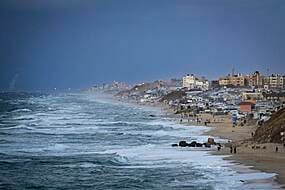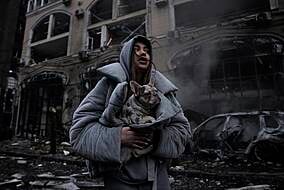A witness at Kyle Rittenhouse’s murder trial gave evidence that he confronted a rifle-toting Rittenhouse with a gun of his own to try to stop the bloodshed, and thought he was going to die as he closed in on the young man.
Gaige Grosskreutz, 27, ended up getting shot and seriously wounded in the arm by Rittenhouse.
Mr Grosskreutz went into action that night after seeing Rittenhouse kill a man just feet away, the second person Rittenhouse fatally shot that night.
“I thought the defendant was an active shooter,” Mr Grosskreutz said, recounting how he pulled out the pistol he had holstered.
Asked what was going through his mind as he neared the 17-year-old Rittenhouse, he said: “That I was going to die.”
Rittenhouse, now 18, is on trial on charges of killing two men and wounding Mr Grosskreutz in the streets of Kenosha during a turbulent protest against racial injustice in the summer of 2020.

The one-time police youth cadet from Antioch, Illinois, was 17 when he went to Kenosha with an AR-style rifle and a medical kit in what he said was an effort to safeguard property from the demonstrations that broke out over the shooting of Jacob Blake, a black man, by a white Kenosha police officer.
Mr Grosskreutz had a gun in has hand, with his arms raised, when Rittenhouse fired, shooting him in the bicep.
A prosecutor asked Mr Grosskreutz why he did not shoot Rittenhouse.
“Like I said, that’s not the kind of person that I am.
“That’s not why I was out there,” he said.
“It’s not who I am.
“And definitely not somebody I would want to become.”
Earlier that night, Mr Grosskreutz was recording on his cellphone for a livestream when he heard gunshots a few blocks away. He heard people yelling for a medic, and he began running toward the sound of the gunshots.
The video played in court showed Mr Grosskreutz coming upon Rittenhouse as Rittenhouse was running away.
He asked him what he was doing and if someone was shot.
Rittenhouse said: “I’m going to the police.
“I didn’t do anything.”
At the time, Mr Grosskreutz gave evidence, he thought Rittenhouse said: “I’m working with the police.”
Mr Grosskreutz ran along with Rittenhouse for a few seconds while trying to talk to him, but then turned to go help whoever might have been shot.
But then Mr Grosskreutz turned back toward Rittenhouse because he heard people saying that Rittenhouse had shot someone.
In the courtroom, Rittenhouse kept his eyes on Mr Grosskreutz as he gave evidence.
When asked questions by prosecutors, Mr Grosskreutz turned and looked straight at the jurors, who sat just feet away.
Mr Grosskreutz, who was trained as a paramedic, gave evidence that he volunteered as a medic at protests in Milwaukee in the days after George Floyd died under the knee of a Minneapolis police officer in May 2020.
Mr Grosskreutz said he attended around 75 protests before the night he was shot in August 2020, offering help to anyone needing medical attention.
Mr Grosskreutz said he was wearing a hat that night that said “paramedic” and was carrying medical supplies, in addition to a loaded pistol.
Mr Grosskreutz said his permit to carry a concealed weapon had expired and he did not have a valid permit that night.
“I believe in the Second Amendment.
“I’m for people’s right to carry and bear arms,” he said, explaining why he was armed.
“And that night was no different than any other day.
“It’s keys, phone, wallet, gun.”
He said he provided medical assistance to about 10 other people that night.
Rittenhouse is white, as are the three men he shot, but the case has raised polarising questions about racial justice, policing, vigilantism and the right to bear arms.
Prosecutors have portrayed Rittenhouse as the instigator of the bloodshed.
Rittenhouse’s lawyer has argued that he acted in self-defence, suggesting among other things that Rittenhouse feared his weapon would be taken and used against him.
In the first week of Rittenhouse’s trial, witnesses gave evidence that the first man shot and killed that night, Joseph Rosenbaum, 36, was “hyperaggressive” and “acting belligerently” that night.
Witnesses said Rosenbaum angrily threatened to kill Rittenhouse that night and that Rosenbaum was gunned down after he chased Rittenhouse and lunged for his rifle.
Rosenbaum’s killing set in motion the bloodshed that followed moments later: Rittenhouse shot and killed Anthony Huber, a 26-year-old protester seen on bystander video hitting Rittenhouse with a skateboard.
Rittenhouse then wounded Mr Grosskreutz.
Rittenhouse could get life in prison if convicted.







